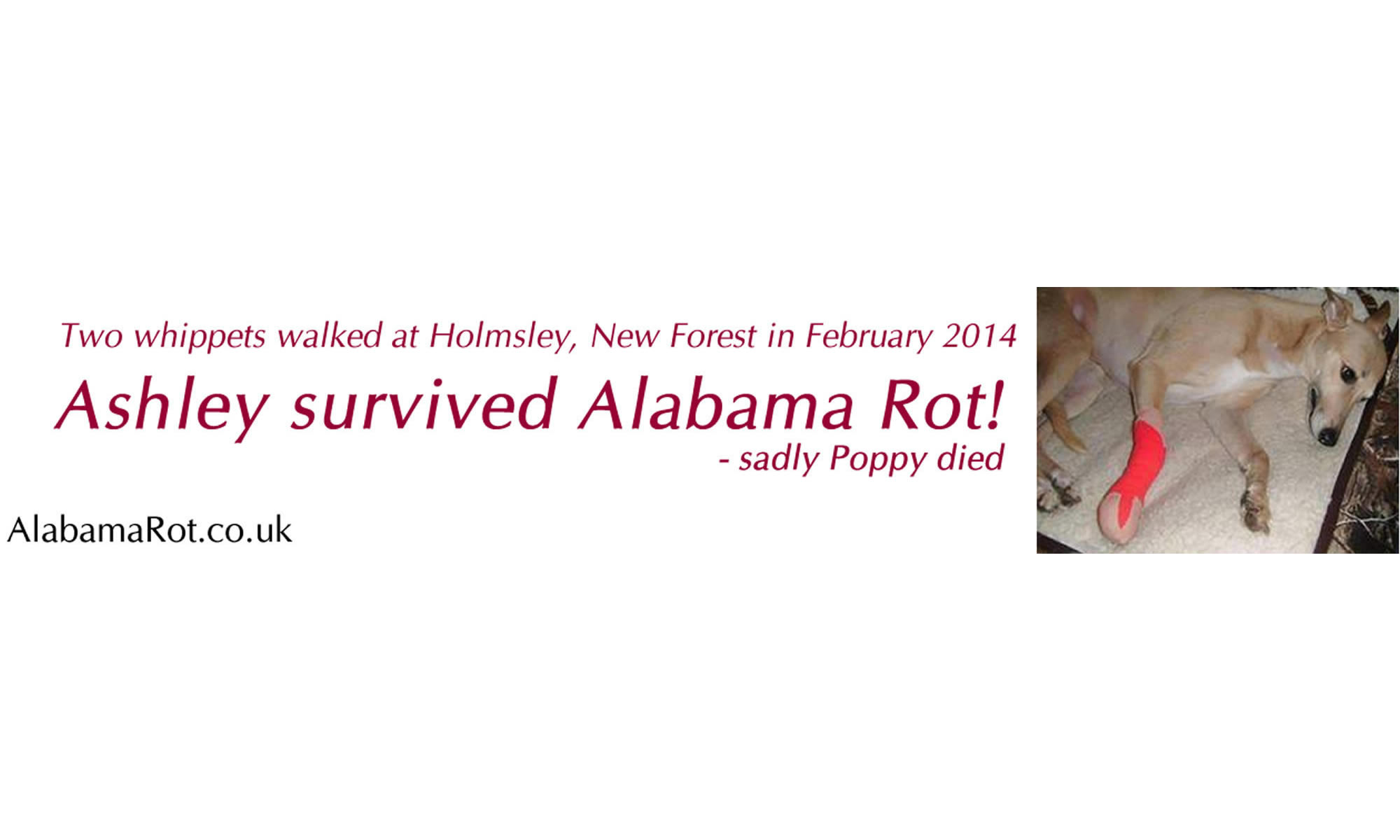Anderson Moores Vet Specialists commented about CRGV/Alabama Rot:
“The majority of the [CRGV/Alabama Rot] affected dogs have been walked in woodland (various types to the best of our knowledge); however, not all. An environmental trigger is strongly suspected but has not been confirmed.” Source: Anderson Moores on facebook, 4th January 2016

I think the bird suggestion is a good one.
Take the humble fieldfare. Arrives in the UK and hangs around in hedges and woodland, leaving between March and May. I am sure there are many others.
Hi Sharon,
I actually did thinking of that not long since when I read that one of the dogs was never walked in woods or on open land (presumably leaving only the urban stone, tarmac, concrete and the odd grass verge). As few or no animals live in our grass verges, that kind of leaves only insects and/or birds’ droppings. The problem with both those and other organic sources, I suppose, is that no bacterium or virus has been identified in some four years now. As I understand it, if the problem were insects, this would spread more in warmer months when there are lots more of them. A lot of the birds are gone in the winter months, when the most cases arise, so it’s difficult to see bird droppings as the cause. Another problem with bacteria and viruses is that this thing doesn’t seem to have spread like an epidemic – say, like a foot- and-mouth outbreak in cattle – and I’m doubting that bacteria or viruses do synchronised mutation – in all the different locations where CRGV cases sprang up. Not sure, either that “forest birds” stay in the forest enough what with them having wings and all – like birds do.
Until someone can show me otherwise, I’m guessing for now that this is some low-level contaminant, e.g. radioactive particles from, say, depleted uranium firing ranges, and active and decommissioning nuclear power plants in the UK. A few miles upwind of the New Forest, Winfrith has been getting decommissioned and – guess what – the Lulworth depleted uranium firing range. I have not the slightest doubt that a lot of the radioactive installations will have been demolished in the open air. After all, they dumped this stuff into the sea in oil drums for decades, just so we could all eat it in our fish and chips.
All that combined with the build-up of deposits from the one meltdown in Chernobyl (still leaking), or the 7+ still uncontrolled melt-downs in Fukushima still fissioning into the open air and the sea – which happened in…let me see now… 2011, one year before this outbreak (we are right in the jet stream from Fukushima).
Then, of course, there are the usual constant emissions from the still-active nuclear power plants like Dungeness- yes, they release materials up the chimney all the time. Oh, look! There are a couple of cases of CRGV around that too.
All this stuff builds up, particle by particle inside the flesh and blood of animals – and humans. The kidneys filter the blood and guess what? One day, they pack up. You walk in it barefoot, you pick up cesium and hot particles and – you bet you get lesions. If lie down on it, or walk on all fours then lick your bits, you also get poisoned. Poor dogs.
Wouldn’t want to let any dog of mine lap water outside…say, in the winter…in the forest…where there are puddles of whatever contaminants the trees sieved out of the polluted air…downwind of God-knows-what. Burnt-out DU target tanks, shallow nuclear land-fills (yes, we got ’em too), nuclear chimneys (every power station), nuclear demolitions. When Hinkley re-opens, we get to do it some more. Oh goody.
For now, probably no need to wreck our brains thinking of another cause. Just Google this stuff. Like I did, and you’ll see what’s going on.
Has anyone thought of looking at what woodland birds might be contributing in the way of bacteria or viruses in their droppings? It could have come over via a bird initially.